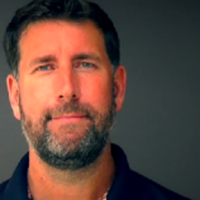Podcast: Play in new window | Download
Video Transcript:
Paul: Hi, this is Paul Clifford from Disruptware and today I want to talk about why Freemium is probably the wrong pricing model for your SaaS product.
So let's just look at three reasons why Freemium probably won't work.
Now first of all, Freemium is a very attractive proposition, especially for new startups because the concept is...let's get everyone in for free, get them signed up to our really cool product. And then all we got to really do is keep marketing to them and shift them into our premium content or our premium pricing level, our pro- whatever you want to call it.
But the fact is that first of all, there's an issue called the psychology of the penny gap. And that is if you look at a one dollar product and a ten dollar product, then the perceived value to the customer is ten times. Okay, so from one dollar to ten. But then if you take away the one dollar and you make that free, then all of a sudden the whole perception and the value multiple just disappears.
And in fact, you're giving them a huge amount of value - an undetermined amount of value - for free. And so the gap between that and your ten dollar product is really difficult to quantify. And so what you have to do is make the premium one significantly more in terms of perceived value to actually get them to shift their mindset to go for the ten dollar product.
Okay, so the whole perception just goes away and the only other way you can actually really do it is by providing or locking them in to some sort of storage, or some way that you're limiting their access where they're compelled to upgrade. Because their storage exceeds a certain value or something like that. They're absolutely locked in and the only option is to really upgrade.
Of course there are companies that have succeeded in a Freemium market and I'll come to those in a second, but let's just look at another reason why it's really difficult to convert Freemium users to paid.
And the second one is really ownership. When you have a paid user come on board, they've already invested. So they now take ownership of their on-boarding process, you know, getting them into the system, getting them set up because they paid something for it.
Whereas a free user is much more likely to discard it and not install it or not do anything much, much sooner. And the on-boarding process can be quite difficult depending on the complexity of your app, but you have to get your customer from A through to B in a way that makes them feel fulfilled. And often it's a lot easier to do that when you've actually got someone who's paid something for that.
The third reason is a bit more obvious and that is that paid users have credit cards. They've got money to spend and they've already taken that mental leap into actually getting out their card and paying for something.
Whereas the free user is much more casual and you don't know would actually have the capability to upgrade to a pro plan at all.
Of course I'm not alone in this, but there are some great examples of Freemium as we all know. There's Dropbox, there's Evernote - but when you actually look at their data they're only converting like 0.5 to 2 percent of their customer base into their premium version.
They also have to then nurse and invest in an infrastructure and technology to handle millions of free users. And you can only really do that with some serious investment backing.
And of course there's plenty of examples of well known SaaS products and companies who've actually tested out the Freemium model and decided it doesn't work. So if you look at Basecamp, Crazy Egg, MailChimp, they've all gone through that and they've realized that it's just not going to happen for their businesses.
And if you draw a parallel from the email marketing world as an example, it's a well known fact that paid users on an email list are much more powerful and much more likely to buy something in the future than free users on the list. So in other words, people who've opted into a list for free.
So the difference in the email marketing is absolutely massive and if you draw the parallels from that into the software world, then you can actually see why Freemium is an extremely difficult model to monetize and not one that I'd suggest testing for your SaaS product.
So I hope you found that useful. This is Paul Clifford from Disruptware.
Recommended Resources:
1. Dropbox - click here
2. Evernote - click here
3. Basecamp - click here
4. Crazy Egg - click here
5. MailChimp - click here

